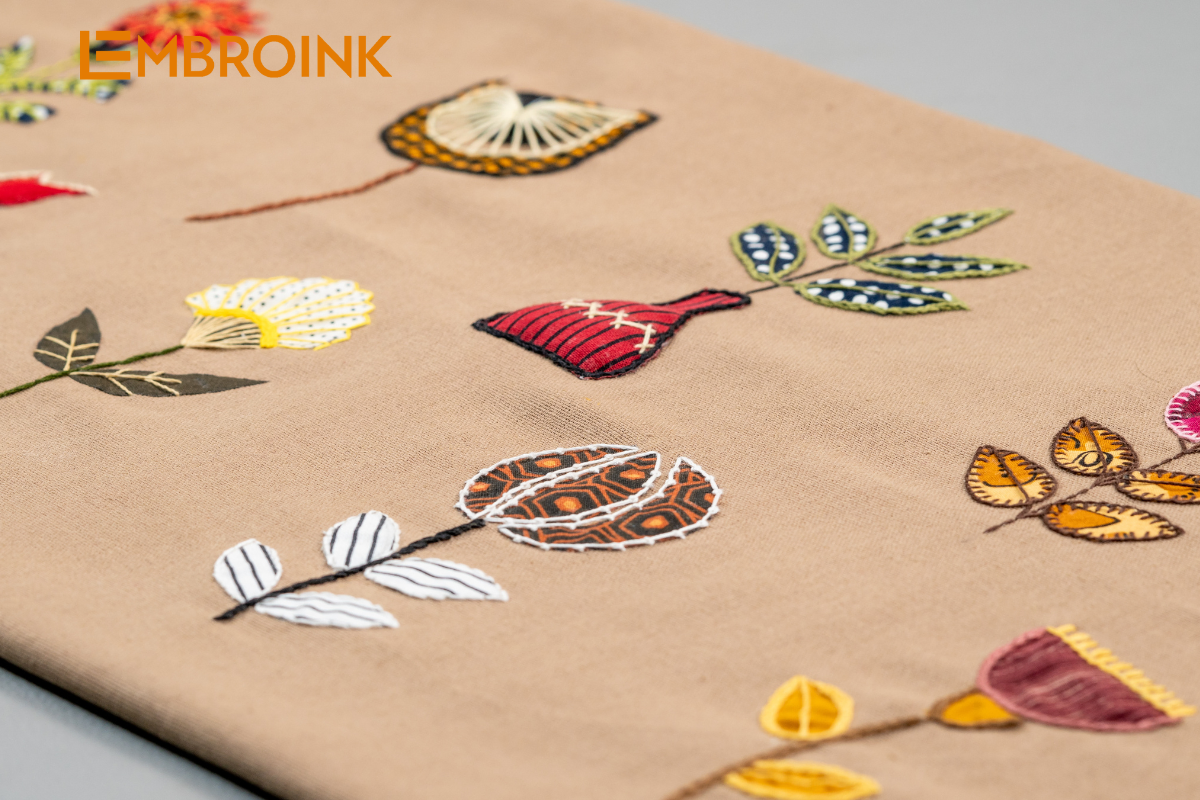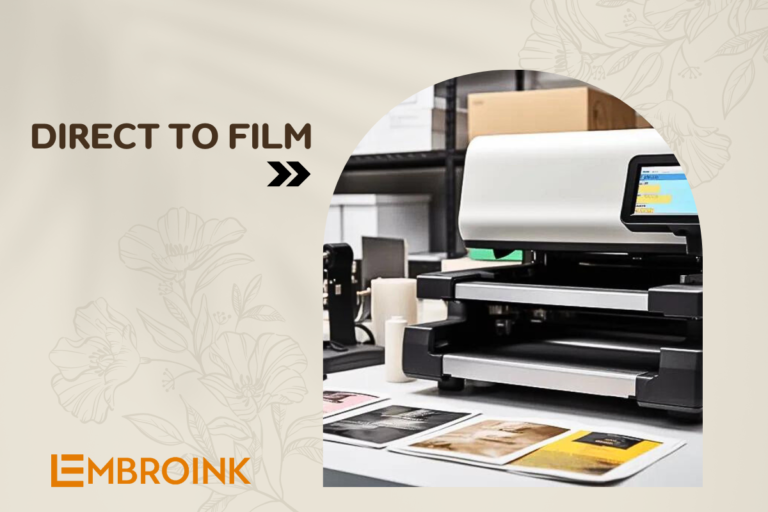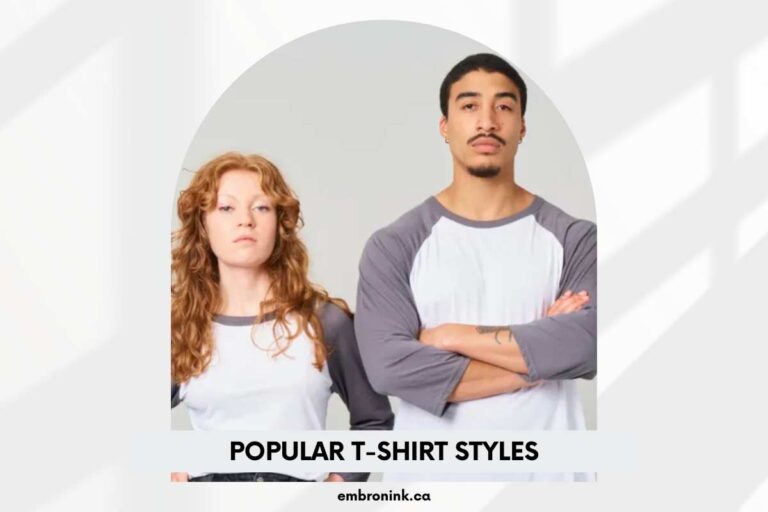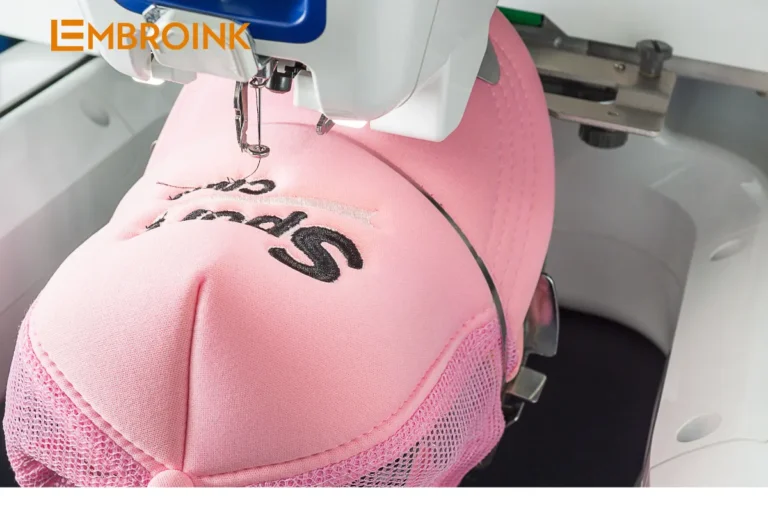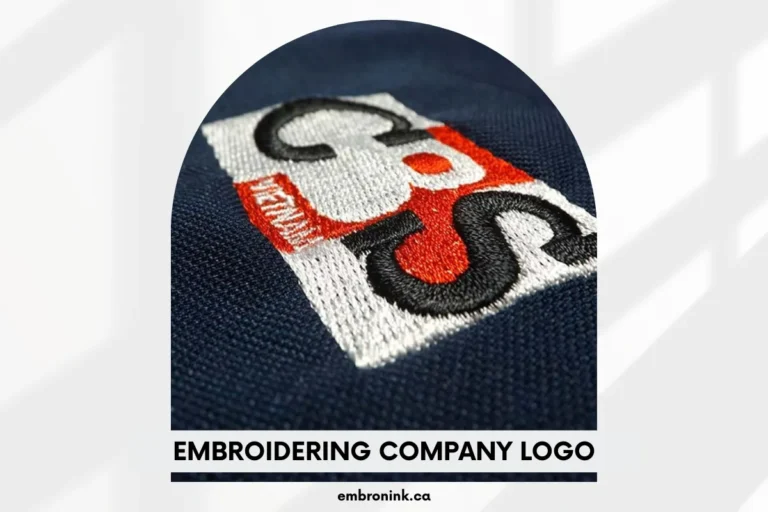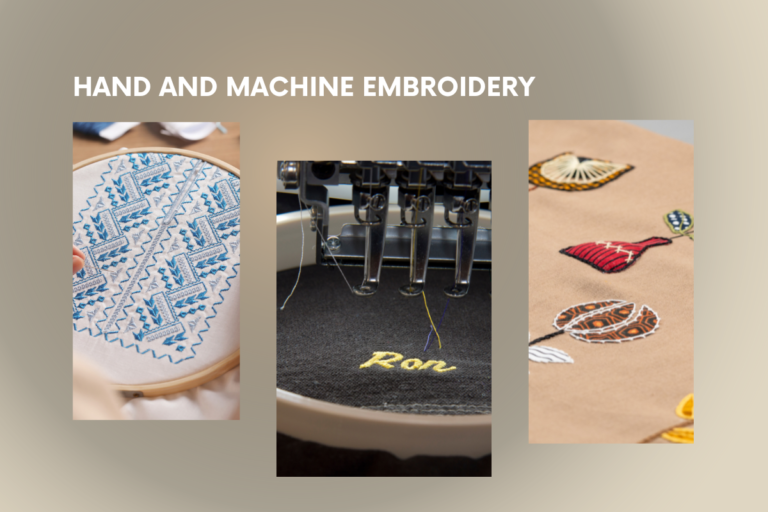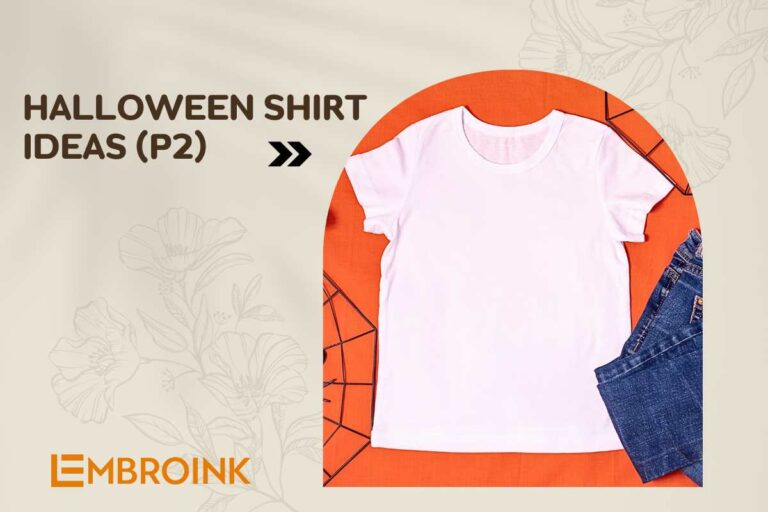The battle of embroidered and printed custom clothing
Custom clothing is all about elevating your business, showcasing your unique style, and creating iconic looks. But before you dive in, there’s a crucial step: you need to design your apparel and choose a fulfillment method. This brings us to the ultimate choice: embroidered vs. printed custom clothing.
Let’s keep it real—both customization methods come with their own pros and cons. But don’t worry! By understanding the nuances of each option, you’ll find the perfect fit for your brand and designs.
So, let’s take a deep dive and explore with EmbroInk what each method has to offer. Get ready to discover your ultimate match for custom t-shirts, hoodies, and more!
Embroidered Custom Clothing
Embroidered custom clothing involves stitching intricate designs directly onto fabric, giving your apparel a textured, artistic, and durable finish. This method blends sophistication with longevity, making it an impressive choice for showcasing logos and custom designs.
Types of Embroidery
There are various embroidery styles to meet your design needs. Here are the two main types:
- Regular Embroidery: This classic technique uses a limited number of thread colors, perfect for creating clean and elegant looks. It’s ideal for logo designs and monograms on t-shirts. While it may have some color limitations, regular embroidery offers a refined and professional appearance.
- Unlimited Color Embroidery: As the name implies, this method allows for an unrestricted palette of thread hues. It’s perfect for intricate graphics and photorealistic artwork.
Among the many embroidery styles available, 3D Puff Embroidery is particularly noteworthy for those looking to add an extra dimension to their fabric. Below is a quick list of other embroidery types to explore further.
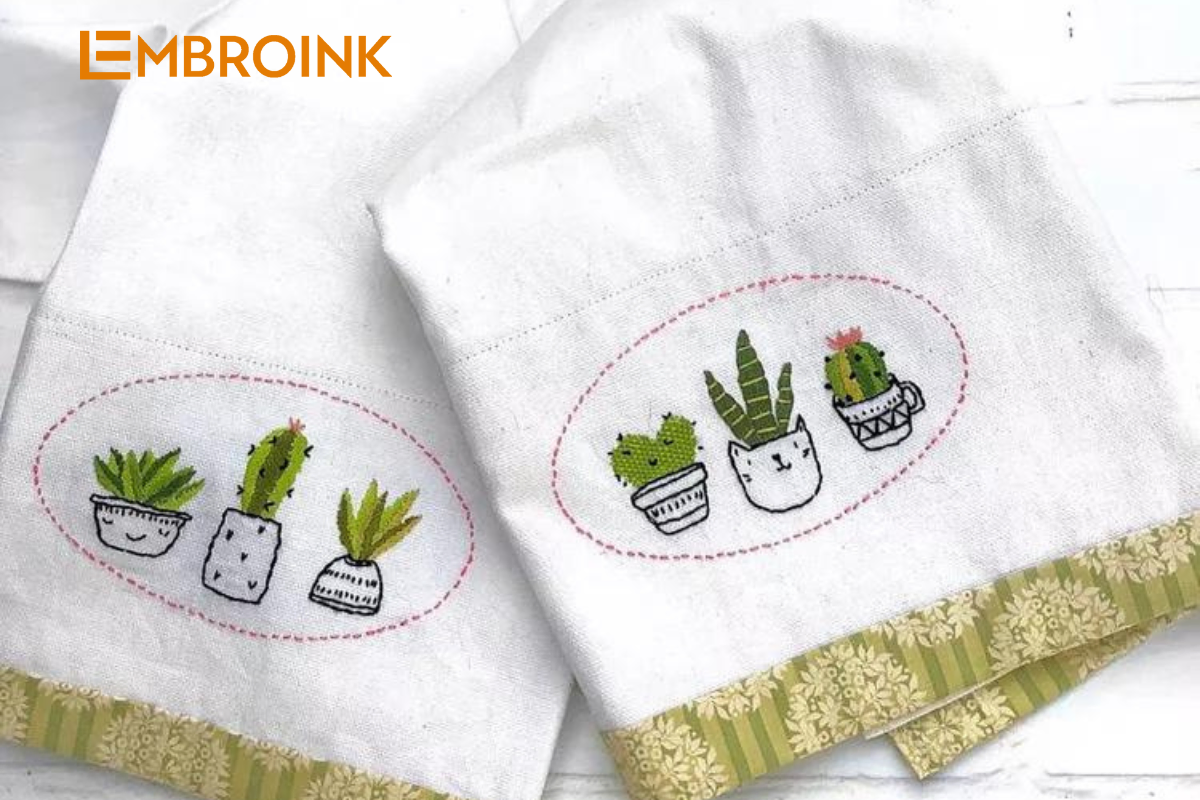
How does embroidery work?
Here’s a brief overview of the embroidery process:
- Digitizing Design: The first step involves converting your design into a digital file using specialized software. This process, known as digitizing, generates instructions for the embroidery machine to follow.
- Hooping the Fabric: Next, the fabric is securely placed in a hoop or frame, preparing it for embroidery.
- Embroidery Machine Setup: The digitized design is then loaded into the embroidery machine, which is equipped with multiple needles and threads.
- Stitching the Embroidered Design: A computerized embroidery machine carries out the stitching, precisely moving the needles and threads to create the desired patterns, shapes, and colors based on the digitized file.
- Finishing Touches: Once the embroidery is complete, any loose threads are trimmed, and the finished garments are inspected for quality and accuracy.
Printed custom clothing
Printed custom clothing offers incredible versatility, allowing you to work with various fabric types while enjoying a wide range of creative freedom. Let’s delve into the different printing techniques and the results each method can achieve.
Types of printing
Here are the primary printing options available:
- DTG (Direct-to-Garment) Printing: This method involves printing the design directly onto the fabric using specialized inkjet printers. DTG is ideal for intricate and colorful designs, thanks to its detailed finish. Key advantages of DTG include minimal setup time, quick printing, and low production costs.
- Sublimation Printing: This technique transfers the design onto the fabric using heat and special inks. Sublimation works best on polyester fabrics, making it a popular choice for vibrant and long-lasting prints.
- DTF (Direct-to-Film) Printing: Instead of printing directly onto garments, DTF prints the design onto a special film, which is then transferred onto the fabric using heat and pressure. This versatile option works well with various fabric types and produces high-quality, durable prints.
How does printing work?
For those unfamiliar with the process, printing garments might seem like magic. However, it’s all about technology:
DTG (Direct-to-Garment) Printing
DTG printing is a modern technique that involves directly spraying ink onto the fabric using specialized inkjet printers. This method allows for intricate designs and vibrant colors, making it an excellent choice for detailed graphics and images. DTG is particularly suited for small batch production, as it requires minimal setup time and no screens or plates, which reduces costs for lower quantities. The process allows for an almost limitless range of colors and intricate designs, making it ideal for custom t-shirts, hoodies, and other apparel where artistic detail is paramount. Additionally, because DTG uses water-based inks, the final prints maintain a soft feel and can blend seamlessly with the fabric, providing comfort without compromising design quality.

Sublimation Printing
Sublimation printing is a unique process that utilizes heat to turn ink into gas, which then bonds directly with the fabric fibers. This method is best suited for polyester materials, as the dye becomes a part of the fabric, resulting in vibrant, long-lasting prints. Sublimation allows for a wide color gamut and produces high-resolution images with stunning detail, making it perfect for all-over prints or intricate designs. One of the significant advantages of sublimation is its durability; the designs are resistant to fading, cracking, or peeling over time, even after multiple washes. Moreover, since sublimation inks are transparent, the base fabric color can influence the final print, offering creative opportunities for customization on light-colored fabrics.
DTF (Direct-to-Film) Printing
DTF printing stands out as a versatile option that prints designs onto a special film before transferring them onto the fabric using heat and pressure. This method produces high-quality prints with excellent color vibrancy and detail, making it suitable for a variety of fabric types, including cotton, polyester, and blends. DTF is particularly beneficial for intricate designs and gradients, as it can replicate fine details that may be challenging for other printing methods. The transfer process creates a durable bond with the fabric, ensuring the print remains intact through numerous washes. DTF printing is also noted for its ability to handle both dark and light fabrics, making it an excellent choice for custom apparel, promotional items, and specialty products.
Embroidered vs. Printed Products: Key differences
When it comes to custom apparel, embroidery and printing take center stage. Each technique offers distinct advantages and unique charms. Let’s explore the key differences and how they impact the final products.
Look and Feel
Embroidered Products: These not only look stunning but also exude a premium feel. The raised, detailed, and textured 3D design adds depth and dimension to the fabric, creating a tactile experience that sets it apart from other fulfillment methods.
Printed Products: DTG (Direct-to-Garment) technology produces vibrant and detailed designs that blend seamlessly with the fabric. While water-based inks create soft prints, fresh prints may feel slightly rough but will smooth out after a few washes. Sublimation technology creates smooth, integrated designs that remain durable and fade-resistant over time; however, it works best on polyester fabrics. DTF printing offers bold and sharp designs with a slightly raised texture, making it versatile for various fabric types.
Durability
Embroidered Designs: These are tough and retain their shape and color even after multiple washes. However, be cautious of snagging the delicate threads.
DTG Prints: With proper care, DTG prints maintain their vibrancy, but dark or colorful fabrics may experience slight fading due to ink absorption. Sublimation printing embeds designs into the fabric, offering excellent durability. Keep in mind that 100% polyester shirts last longer than cotton ones, and sublimation dyes are more prone to fading in sunlight. DTF prints are sharp and resilient, though they may crack if washed in very hot water. Still, they are more resistant to peeling and cracking compared to DTG prints.
To ensure the longevity of your custom clothing, follow care instructions and avoid harsh chemicals. Both embroidery and printing can withstand the test of time with proper care.
Design Complexity
Embroidery: This method excels in intricate and detailed designs, using needle and thread precision to showcase fine details, delicate patterns, and monograms with impressive clarity.
Printing Techniques: The complexity of printed designs varies by method. DTG and sublimation handle a broad range of designs, but extremely intricate patterns may not be their forte. That said, digital designs converted into prints will capture fine details more sharply than embroidery. DTF printing, on the other hand, excels at complex designs, easily accommodating photos, full-color graphics, fine art, small text, and more—resulting in sharp and realistic prints that support gradients.
When considering design complexity, it’s essential to assess the level of intricacy you desire. For specific, detailed designs, embroidery reigns supreme, while printing shines in delivering bold and elaborate graphics.
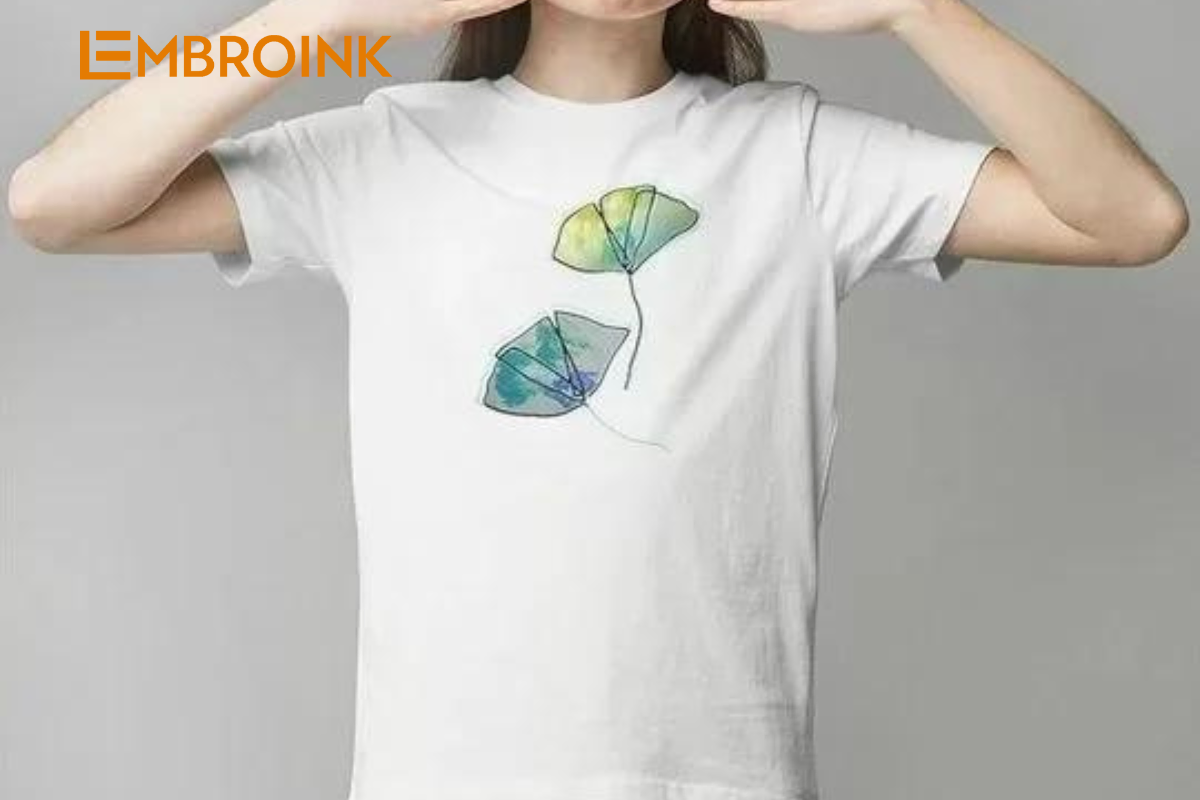
Design Size
Embroidery: This technique excels with smaller designs, delivering precision and detail even in tiny logos or monograms. The controlled stitching of the machine ensures top-notch quality for intricate designs. However, embroidery is less suited for large-scale designs, as it requires additional time, precision, and costs.
Printing: In contrast, printing accommodates bigger and bolder designs effortlessly. Methods like DTG, DTF, and sublimation embrace eye-catching graphics and full-size prints, making them ideal for apparel that aims to stand out in a crowd. However, be cautious—printing may compromise sharpness in very small designs due to resolution limitations.
Colors
Embroidery: This method utilizes various colored threads to create designs. There are two primary approaches within embroidery: regular embroidery, which relies on a limited number of thread colors, and unlimited color embroidery, which allows for greater flexibility in design.
Printing: In DTG printing, the CMYK color model (cyan, magenta, yellow, and black) is used, along with white ink as a base. Although this method can produce vibrant designs, the direct spraying of ink onto the fabric may result in slightly less bright prints compared to other methods.
Sublimation Printing: This technique yields the best results on white garments but can also be effective on light-colored fabrics. The sublimation ink is transparent, allowing the base color of the garment to partially show through, which can affect the final appearance.
DTF Printing: This method employs primary colors with a white base on dark garments, ensuring vibrant and vivid prints regardless of the fabric color or type.
Products
When deciding between embroidery and printing, it’s essential to consider the material and surface of the items you’re working with.
Embroidery: This technique shines on items like caps and jackets, where its durability and texture enhance the overall look. Additionally, you have creative freedom in choosing where to place the design on the garment, allowing for unique styling options.
Printing: DTG (direct-to-garment) printing is ideal for hoodies and t-shirts. However, it can struggle with thicker fabrics or uneven surfaces, as the ink may not adhere properly to bulky materials. The direct application method requires a smooth surface for the best results.
Sublimation: This method is perfect for polyester clothing, delivering long-lasting and fade-resistant prints. However, it is less effective on non-polyester materials, limiting its versatility.
DTF (Direct-to-Film): Known as the jack-of-all-trades, DTF printing is not limited to clothing. It can also be used on various surfaces, including wood, metal, ceramics, and more, making it a highly adaptable option for different projects.
On-Demand Fulfillment
With on-demand fulfillment for both embroidery and printing, you have complete control over your custom clothing production. There’s no need to worry about large production runs; you can create apparel whenever you want. This approach allows you to cater to individual orders, reduce waste, and avoid excess inventory. Here’s a closer look at how on-demand fulfillment works.
On-demand fulfillment is an efficient method for managing orders. It involves producing, packing, and shipping products only after a customer places an order. This means you don’t have to handle the printing or storing of items yourself. Simply design your products, launch your online store, and partner with an on-demand fulfillment provider like EmbroInk. When orders come in, they manage the entire process—printing, packing, and shipping.
With EmbroInk, there’s no minimum order quantity required. This flexibility enables you to create personalized designs for a wide range of items and market them under your own brand. You can also integrate on-demand solutions alongside in-house production to minimize risks, increase capacity, and prevent overproduction.
Q&A
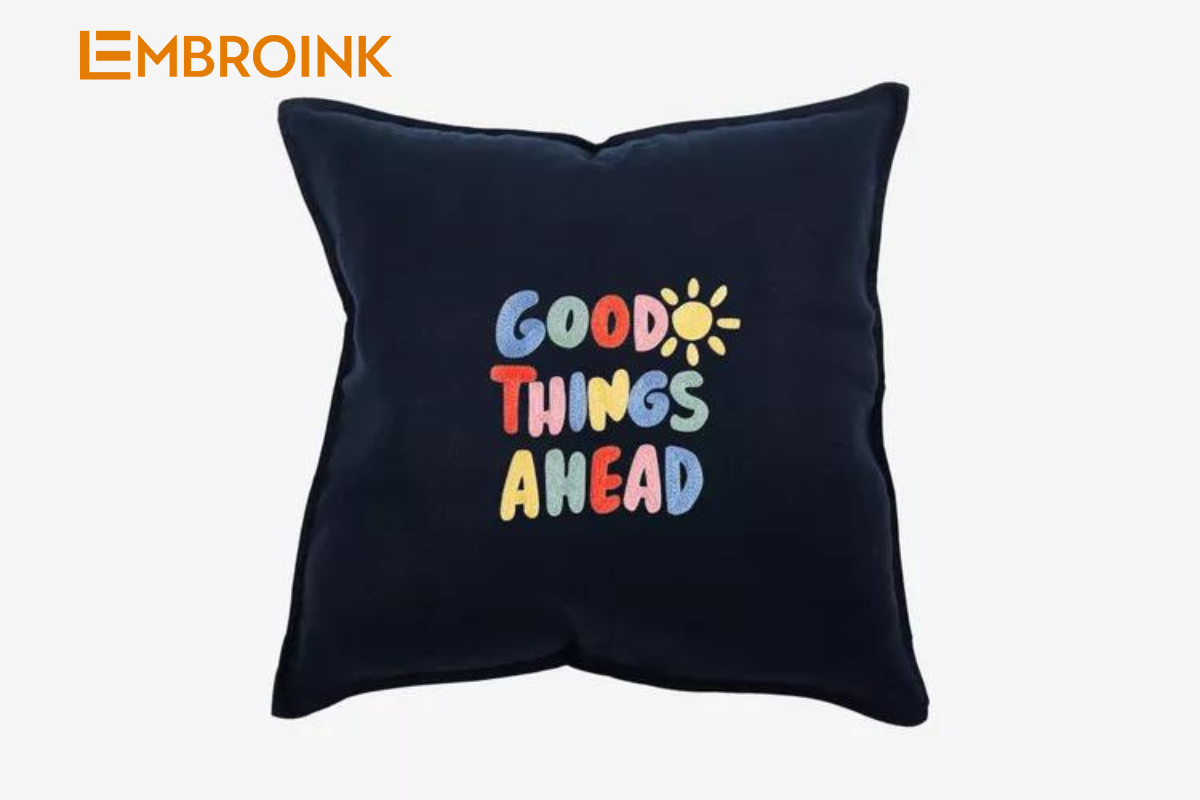
What is Embroidery Best For?
Embroidery should be your top choice when seeking a premium and professional look that complements various fabric types. It adds a timeless, high-quality, and durable finish to items such as shirts, hats, bags, and more. The raised texture creates a 3D effect, making it ideal for intricate designs, embroidered logos, or monograms. This technique is particularly well-suited for formal wear, corporate outfits, and personalized gifts, enhancing their sophistication and appeal.
What is Printing Best For?
Printing is all about versatility and creativity. It excels at handling complex artwork and vibrant colors, making it suitable for a wide range of fabric types, from polo shirts and hoodies to jerseys and promotional items. Printing is perfect for everyday wear, offering various design placements, sizes, and styles to suit any occasion.
Which One Should You Choose for Your Clothing Brand?
The choice between embroidery and printing ultimately depends on your specific needs. If you’re aiming for a refined and upscale look on detailed designs, embroidery is the way to go. On the other hand, if you want large, eye-catching prints on a variety of materials, printed designs should be your go-to option.

